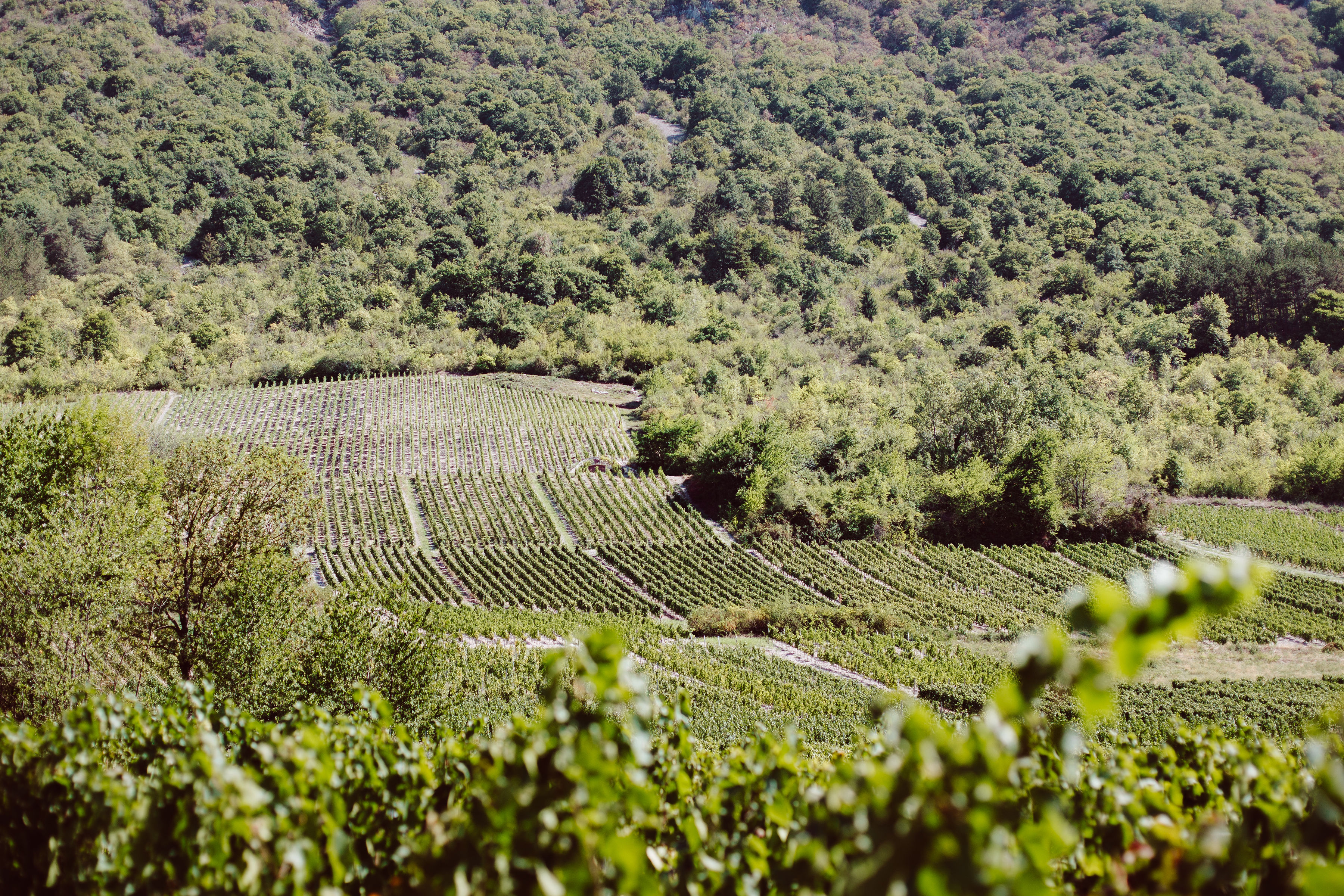
Alsace
Escapade in the vineyards of Alsace
At the foot of the Vosges mountains, over 120 km, lies one of the most modest vineyards in France, at least in terms of size. From its 15,500 hectares of vines, Alsace produces a rich variety of wines. If dry white wines are typical of the Alsatian vineyard, one can also taste sweet and syrupy white wines, sparkling wines, and some rosé and red wines. Their finesse and elegance have made the reputation of the region, which can pride itself on having launched the first tourist wine route in France. More than two million visitors, lovers of wine, typical villages and exceptional landscapes, criss-cross it every year. Now it's your turn to take a trip to Alsace, in the heart of the vineyards.
General presentation of the Alsatian vineyard
The vineyards of Alsace extend over the whole region, through its two departments, the Bas-Rhin in the north and the Haut-Rhin in the south. From Wissembourg, on the German border, to Leimbach, near Thann, 120 km of vineyards stretch between the Vosges and the Rhine plain.
On this strip of 1.5-3 km wide, the vineyards of Alsace offer a great diversity of terroirs. In the low mountains, on the sub-Vosges hills or on the plain, it allows the cultivation of different grape varieties, the most emblematic of which are Riesling, Gewurztraminer and Sylvaner.
The region also has the most advantageous climatic conditions. Protected by the Vosges mountains, it is characterised by low rainfall and very hot summers.
The Alsatian grape varieties
Alsatian wines have the particularity of being very often monocépages. This is why their labels generally mention this, alongside the name of the owner and/or the brand. One estate is an exception to this practice: Domaine Marcel Deiss. It favours "complantation" wines, a technique that consists of mixing different grape varieties within the same plot and the same terroir.
Grape varieties are therefore at the heart of Alsace wines. The most emblematic are :
- Riesling: this is the Alsatian grape variety par excellence. It is used to produce dry and semi-dry white wines, as well as late harvest wines.
- Gewurztraminer: it produces white wines with a marked character (lychee and rose aromas) and generally more residual sugar, as well as late harvests.
- Sylvaner: it is used for white wines with varied characters.
In addition to these three grape varieties, there are
- Pinot blanc, also called klevner
- Pinot Gris, formerly called Tokay d'Alsace, which is no longer authorised
- Pinot noir, the only red/rosé grape variety in the region
- Muscats: muscat blanc à petits grains, muscat rose à petits grains and muscat Ottonel
- Auxerrois
- Chardonnay, used only for Crémant d'Alsace
Alsace wines
They can be recognised by their slender bottles, these "flutes" which are synonymous with Alsace wines. These wines all have an AOC and must be bottled in their region of production. White wines are in the majority, but there are also red and rosé wines. Here are some tips for choosing your next Alsatian wines:
- Riesling, pinot blanc, sylvaner and muscat, for white wines
- Edelzwicker (or zwicker) and gentil for pleasant blended white wines
- Pinot gris and gewurztraminer for intense white wines
- Late harvest" and "Sélection de Grains Nobles" indicate sweet and syrupy white wines
- Red and rosé wines are sometimes light, sometimes powerful: pinot noir rosé and pinot noir rouge
- Crémant d'Alsace is a sparkling wine available in white or rosé
The appellations
The Alsace vineyards are divided into three appellations, which produce more than 630 different wines:
- Alsace wines: they constitute the vast majority of Alsatian wines. The grape variety is mentioned on the label, as well as the brand name and, sometimes, the name of the commune or the locality where it is produced. Edelzwicker is also part of this appellation, although it is a blended wine and not a single variety.
- Grands crus d'Alsace: 51 of these are grown on the slopes of the Vosges under very strict production rules. Only seven grape varieties are allowed: Riesling, Gewurztraminer, Pinot Gris, Muscats and Sylvaner. The vintage is indicated on the label, usually alongside the name of the grape variety and the lieu-dit/village. Examples include Zotzenberg, Altenber or Kaefferkopf.
- Crémants d'Alsace: these sparkling wines represent more than 20% of Alsatian production. They are made according to the traditional Champagne method.
Two mentions come to enrich the Alsatian wine production:
- Late harvest: the grapes are harvested at the moment of their optimal maturation for a powerful sweet wine, rich in alcohol and sugar.
- Sélection de grains nobles: the grapes are affected by noble rot, which occurs during very hot summers. The resulting sweet wines have a strong aromatic power.
Appellations
Le vignoble

